The German Shorthaired Pointer was bred in Germany in the nineteenth century for hunting. They are a versatile hunting breed featuring powerful legs and a sleek, sturdy body. German Shorthaired Pointer coats are commonly silver and white, with high-set, floppy ears. Longer, wider, and stronger muzzles recover larger prey.
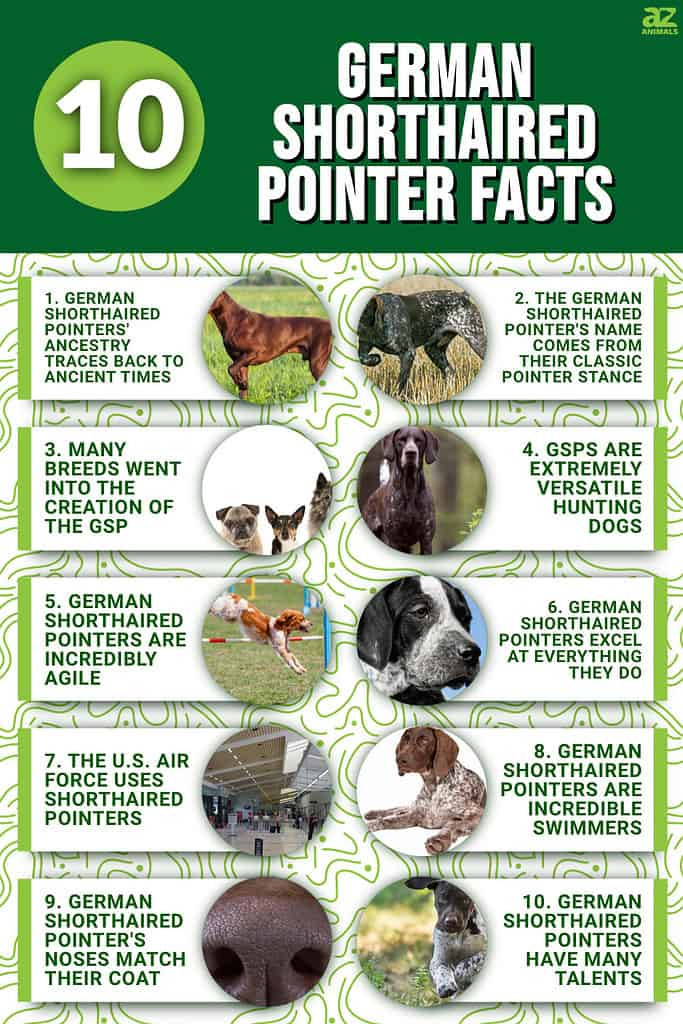
The dog’s nose should be pronounced Roman, and darker eyes are preferable over yellow and “bird of prey” eyes. Tail docking is widespread despite being illegal in several countries. Interested in learning more? Let’s explore 10 incredible German Shorthaired Pointer facts!
1. German Shorthaired Pointers’ Ancestry Traces Back to Ancient Times
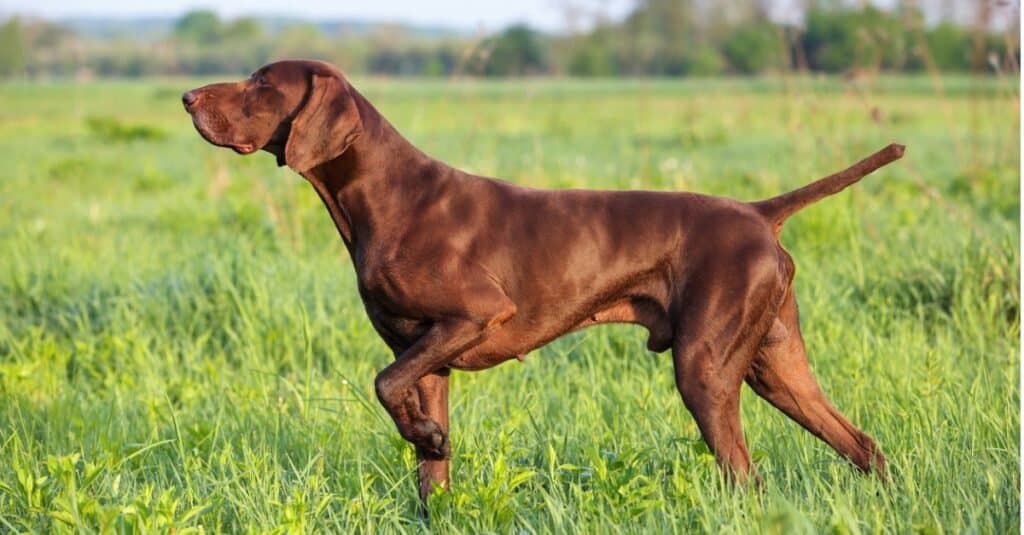
British Army officers transported Spanish Pointers to Britain after the War of Spanish Succession in 1713.
©iStock.com/vik898
German shorthaired pointers were developed in Germany, but pointer-like canines date to Ancient Egypt. Pointers are an old breed, yet their ancestry is unknown. Egyptian tombs include breed-specific paintings. Middle Ages writings place pointing dogs in France, Spain, and Italy. British Army officers transported Spanish Pointers back to Britain after the War of Spanish Succession in 1713, changing the breed’s history.
The British created the pointer and gamebird shooting throughout the following century. Outcrossing with French Pointers gave the slower Spanish Pointers more polish and agility, creating today’s athletic pointer. The AKC recognized it in 1930.
2. The German Shorthaired Pointer’s Name Comes From Their Classic Pointer Stance
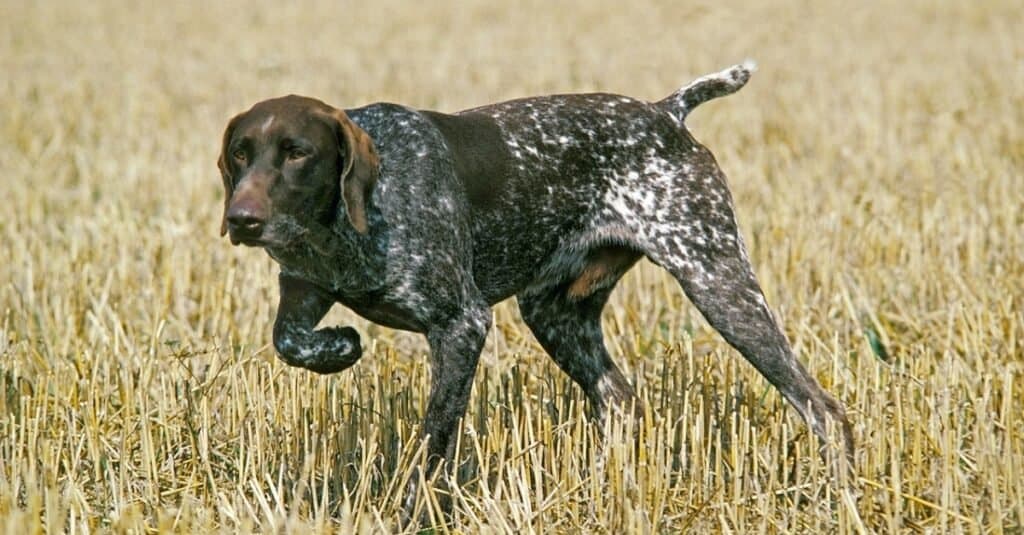
Pointers, as the name implies, use their body to signal to prey.
©iStock.com/slowmotiongli
While in the classic point stance, the tail must be kept straight out from the body, and its body must form a straight line along with its pointed head and torso. Pointers, as the name implies, use their body to signal to prey. So instinctual is this pointing that even pups who have never gone hunting partake in it.
3. Many Breeds Went Into The Creation Of The GSP
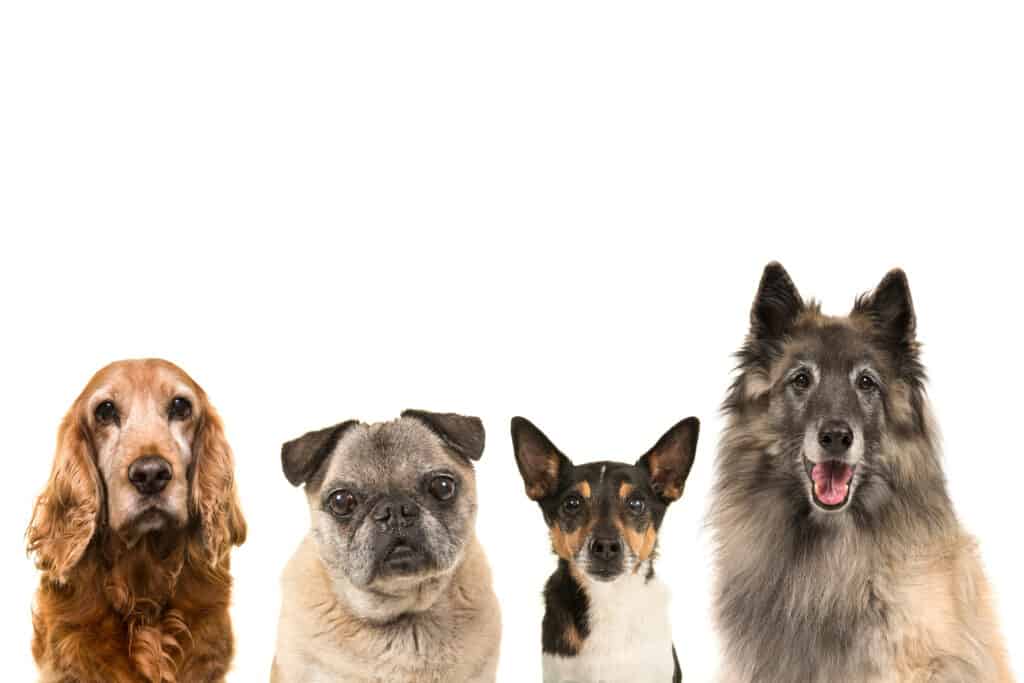
German Shorthaired Pointers’ origins are somewhat uncertain.
©MirasWonderland/Shutterstock.com
Since it was bred before 1870, its exact bloodline is unclear. Most believe the breed’s ancestor is the German bird dog. English pointer, Spanish pointer, Dalmatian, Weimaraner, tracking hound, and Vizsla may have affected breed development. Most breeds have long snouts and floppy ears, including the German shorthaired pointer.
4. GSPs Are Extremely Versatile Hunting Dogs
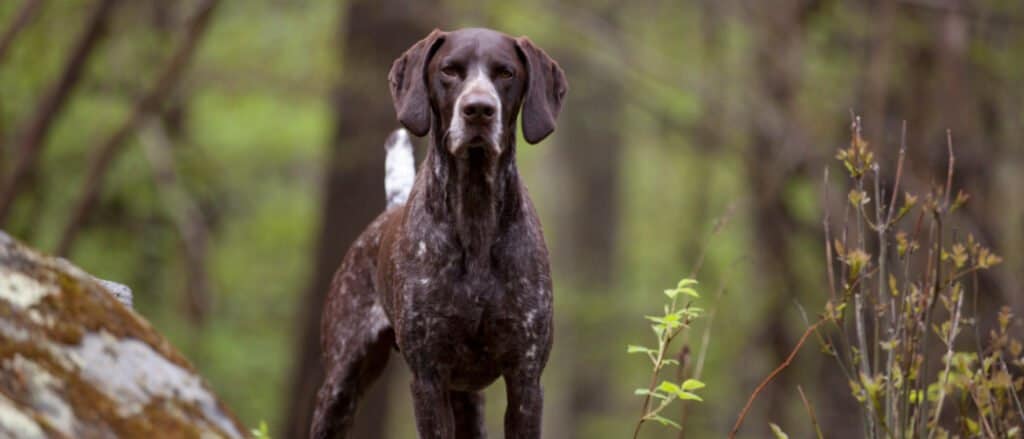
German shorthaired pointers are instinctual hunters.
©iStock.com/BranstonandTwiglet
These multitasking dogs can hunt rabbits, raccoons, game birds, and deer. They’re instinctual hunters. GSPs are hunters and have sharp instincts for squirrels, birds, and rabbits. Because of their predation drive, they may bolt while off leash or scale walls or fences to reach prey. Therefore, off-leash play should be done with caution and understanding of the surroundings.
5. German Shorthaired Pointers Are Incredibly Agile

Agility competitions are great ways to test out dogs’ skills.
©Skumer/Shutterstock.com
In agility, these well-trained dogs run an obstacle course with ease. The competitions require a close bond between canines and their masters. German shorthaired pointers are fast, graceful, and eager to learn. The AKC has hosted top agility tournaments since 1978 when the PACH award was created. In 2015, eight GSPs each won PACH titles.
6. German Shorthaired Pointers Excel At Everything They Do

German shorthaired pointers are frequently referred to as “canine explosives experts.”
©iStock.com/Flopaganifoto
Because these canines are so versatile, it’s evident they were bred for excellence. In addition to dock diving and flyball, GSPs participate in flyball, rallies, field events, and trials. Finding a sport your GSP enjoys is a wonderful way for the dog and the owner to burn off some pent-up energy.
7. The U.S. Air Force Uses Shorthaired Pointers
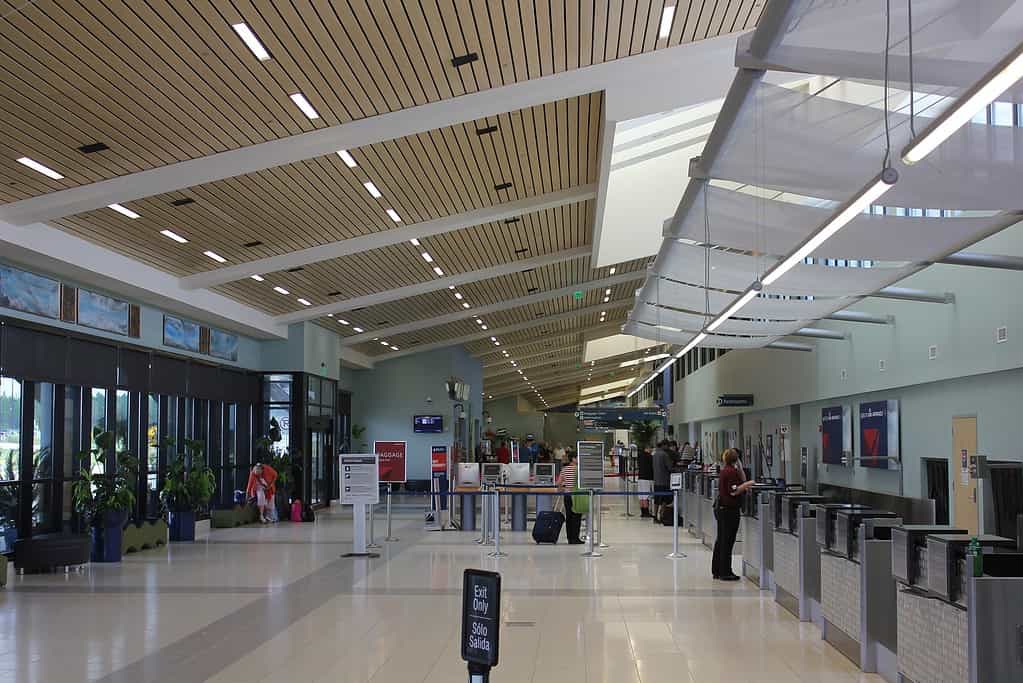
The TSA uses GSPs sometimes to help police airports.
©Nicolas Henderson / CC BY 2.0 – License
The ability of the pointer to identify bombs is used by various organizations, one of which is the United States Air Force. The TSA even utilizes these dogs. They have a natural ability to identify peculiar odors and are frequently referred to as “canine explosives experts.”
8. German Shorthaired Pointers Are Incredible Swimmers

Because of their flipper-like feet and slender, muscular bodies, GSPs are excellent swimmers!
©iStock.com/Eriklam
All German pointers, including GSPs, are known for their webbed feet and their penchant for chasing ducks in the water. Because of their flipper-like feet and slender, muscular bodies, GSPs are excellent swimmers! However, in colder weather, they easily catch a chill in the water due to their short coats.
9. German Shorthaired Pointer’s Noses Match Their Coat
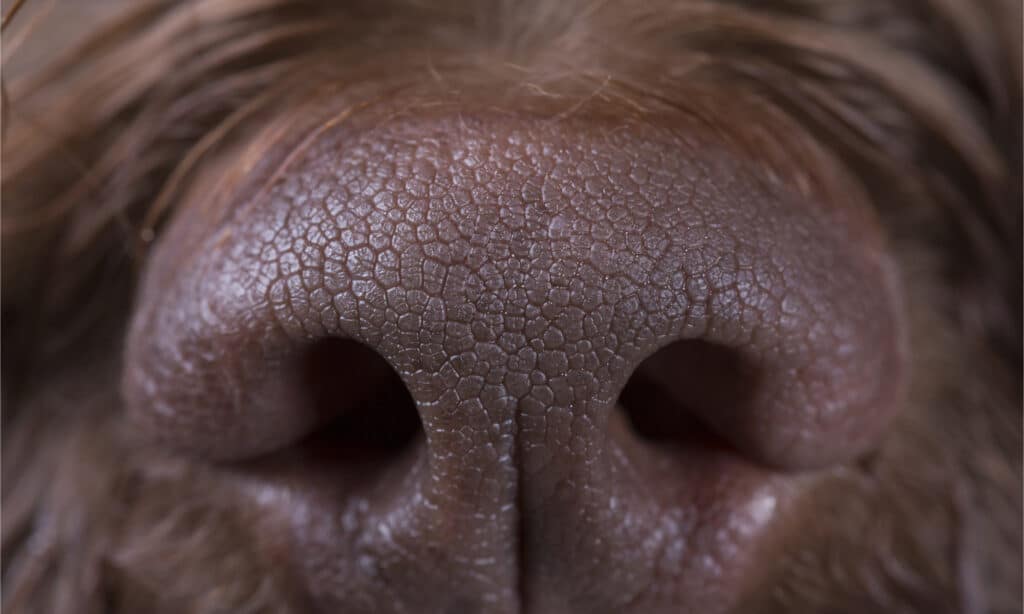
GSPs’ nose color matches their fur coats.
©Jne Valokuvaus/Shutterstock.com
According to the American Kennel Club, the GSP may be found in eight assorted colors, some of which are white, liver, and black. This dog has a nose that perfectly complements the color of its fur. For instance, dogs with dark coats tend to have black noses, while dogs with liver coats tend to have red noses.
10. German Shorthaired Pointers Have Many Talents

The German shorthaired pointer’s large nails give it a grip on the most treacherous terrain when on land.
©iStock.com/BeeBuddy
German shorthaired pointers are in high demand as sled dogs and bomb detectors. They have many attributes that make them appropriate for various uses, both on and off the water. Their ladle-like webbed paws are excellent swimming paddles, and their moisture-resistant coatings keep debris at bay while they swim. Their large nails give them a grip on even the most treacherous terrain when on land.
The photo featured at the top of this post is © iStock.com/vik898
Ready to discover the top 10 cutest dog breeds in the entire world?
How about the fastest dogs, the largest dogs and those that are -- quite frankly -- just the kindest dogs on the planet? Each day, AZ Animals sends out lists just like this to our thousands of email subscribers. And the best part? It's FREE. Join today by entering your email below.
Thank you for reading! Have some feedback for us? Contact the AZ Animals editorial team.






